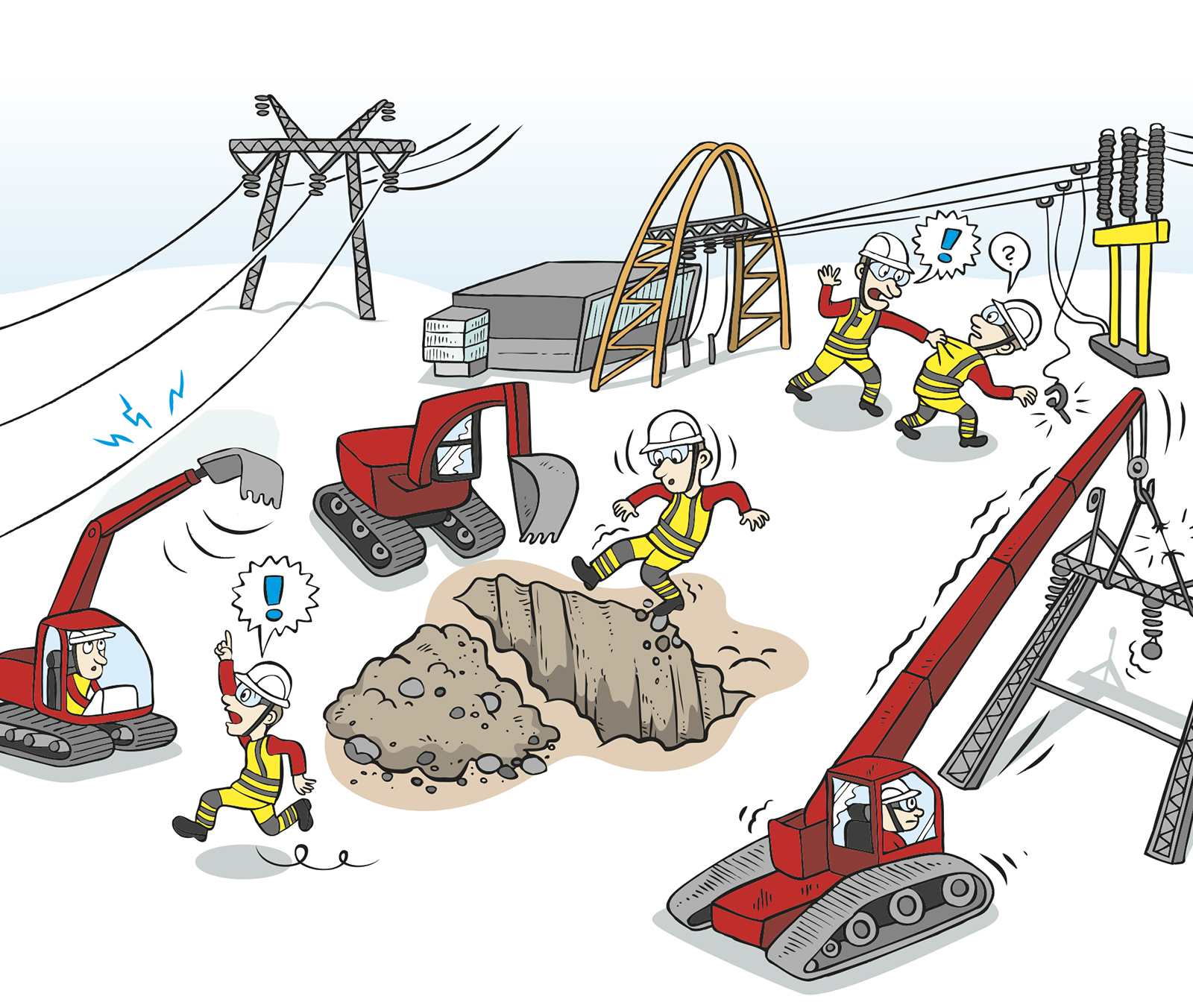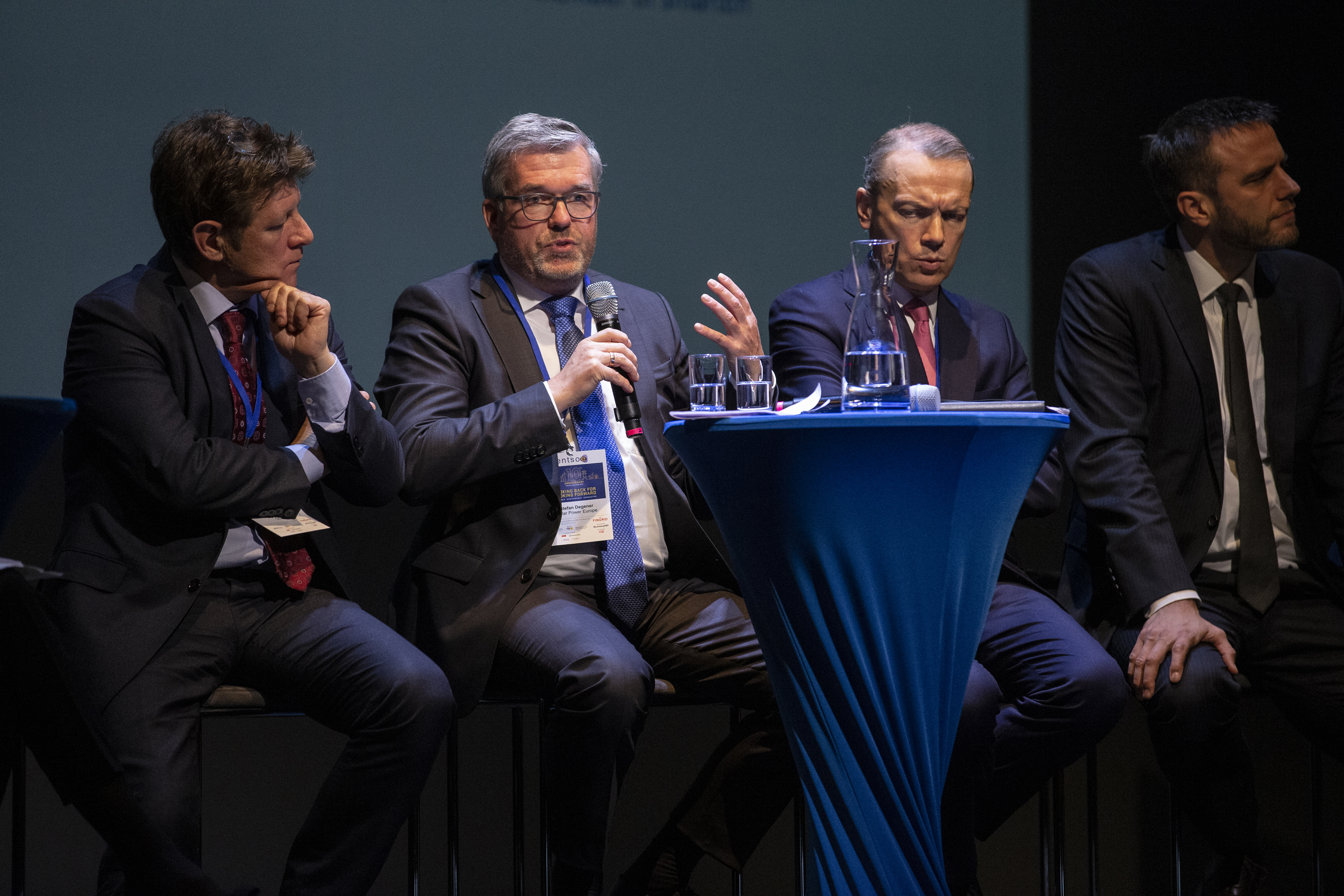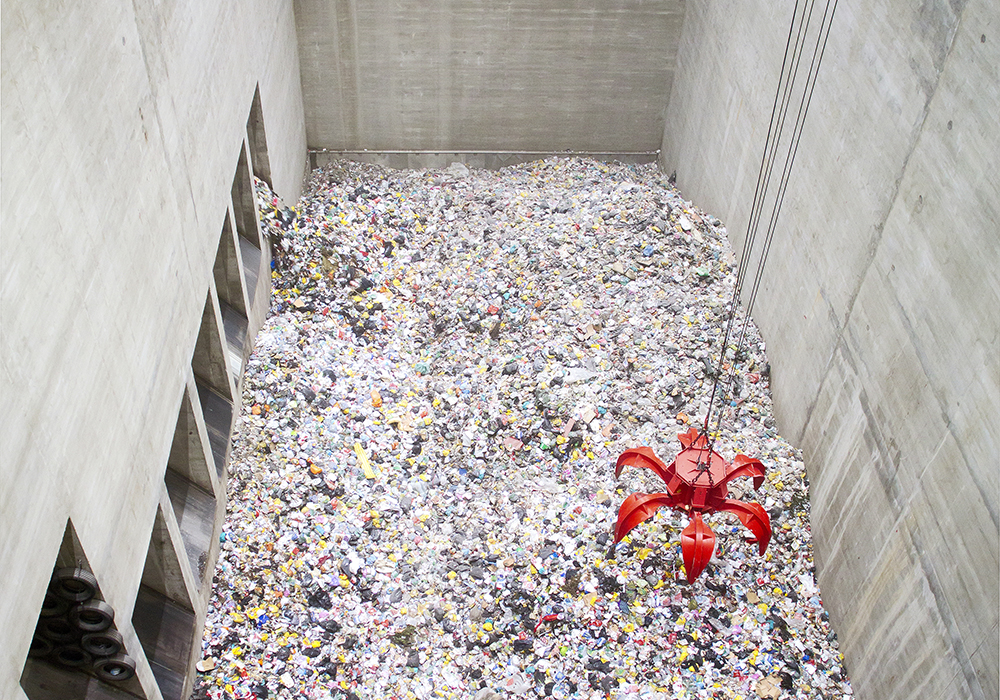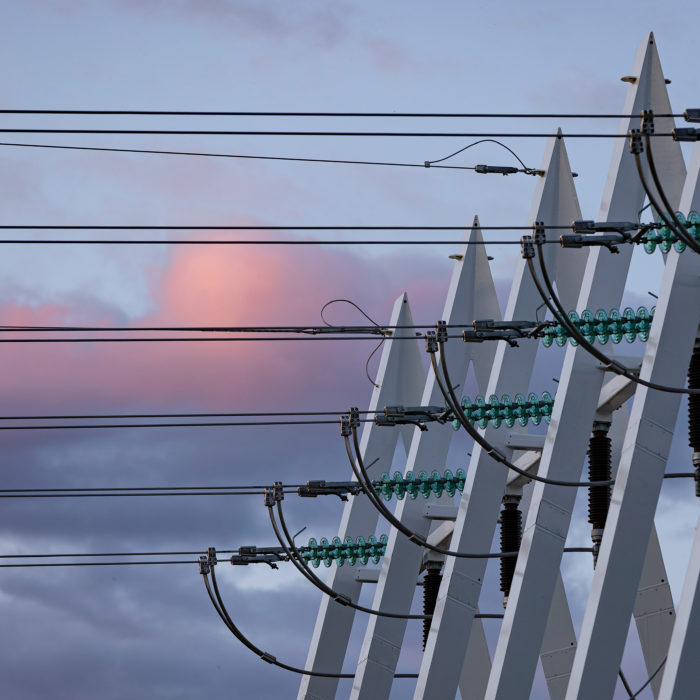
Olli Forsman, Site Manager, NRC Group, Refurbishment of the Keminmaa substation
”There always needs to be a plan when moving around in a substation. Areas usually contain excavations and channels that need to be crossed with care. Furthermore, the signage in work areas must be kept in good order, and employees must comply with signs. Care should always be taken to ensure that the work area is unenergised and earthed. In the winter, slippery conditions pose an additional challenge, and if anti-slip studs are used on shoes, it is important to remember that they can easily pierce the plastic insulation on conducting cables. If personnel lifts are used, it is important to check that the terrain is strong enough to support the hoist throughout the entire route.”
Jarkko Honkarinta, Transmission Line Technician, Destia Oy, Forest Line sections B and C
”I have plenty of experience, so it is quite easy for me to identify potential hazards. However, it is important to remain alert at all times, even if the work feels routine. A general rule for new installation technicians is that if they feel even slightly unsure about a situation, they should always ask the supervisor or a more experienced colleague. In hot summer conditions, it is important to remember to drink enough. Dehydration is a danger, especially when working on towers, and this increases the risk of accidents.

Ville Ruokamo, Transmission Line Technician, Destia Oy, Forest Line sections B and C
”Our company has a policy known as the ‘ten-minute rule’: before any work begins, we take a peaceful moment to assess the potential hazards and check our equipment. The work tools always need to be checked at the work location before any work begins. It is not enough to check them when we set out to start the work because they could get damaged on the way there. We always need to check the surroundings and the movements of other employees. If you ever notice a colleague acting carelessly, you are obliged to say something. In my experience, everything has become more rushed over the years as deadlines are often tight. This naturally increases the amount of pressure on people, and attention to detail may suffer.”
Antti Peltokorpi, Infrastructure Technician, VEO Oy, Construction of the Pysäysperä substation
“Everyone needs to ensure their own safety and make sure that their actions do not put anyone else in danger while working. A calm approach is the key to this. Stress and thoughtlessness are the greatest risks. Worksites may have excavations more than two metres deep with steep sides. We need to be alert when we move around and ensure that it is safe to enter such excavations, for example, by using a ladder.”




